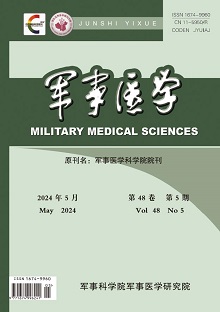Original articles
HU Hui, WANG Xue, WU Yuhan, DONG Huafeng, ZHANG Ling, WEI Aijun, XIE Fang, ZHAO yun, SUN Zhaowei, QIAN Lingjia
Objective To investigate the effect of MALAT1 expressions on cell proliferation and apoptosis in astrocytes by regulating mitogen-activated protein kinase (MAPK)/extracellular signal-regulated kinase (ERK1,2)pathway. Methods The MALAT1 gene was knocked down and over-expressed in C8-D1A cells by lentiviral and plasmid vectors, respectively.The expressions of MALAT1, cell proliferation-related markers (Ki67, MCM2, PCNA) and apoptosis-related proteins (Caspase-3, Bax, Bcl-2) were detected by quantitative real-time polymerase chain reaction(qPCR). CCK-8 assay and flow cytometry were used for cell proliferation and apoptosis in C8-D1A cells. Immunofluorescence was adopted to detect the protein expressions of Caspase-3 and Ki67. Western blotting was used to detect the protein expressions of Caspase-3,Bax,Bcl-2,ERK1/2,p-ERK1/2,p38MAPK and p-p38MAPK. Results Compared with the control group, over-expressed MALAT1 inhibited cell proliferation and induced cell apoptosis in C8-D1A cells while the knockdown of MALAT1 significantly enhanced cell proliferation and anti-apoptotic ability in C8-D1A cells.The proportion of C8-D1A cells in G0/G1-phase and G2/M-phase was higher than in the control group as evidenced by flow cytometry, but was lower in S-phase. Meanwhile, data showed that Caspase-3 was increased while p-ERK1/2 was decreased in terms of protein levels. The mRNA expressions of Ki67 and PCNA were decreased. After knockdown of MALAT1, the proportion of C8-D1A cells in S-phase was higher, but was lower in G2/M-phase. The protein expressions of Caspase-3 and Bax decreased while those of p-ERK1/2 and p-p38MAPK increased. The mRNA expressions of Ki67, MCM2 and PCNA were increased. The differences were all statistically significant (P<; 0.05). Conclusion MALAT1 promotes astrocyte apoptosis and inhibits proliferation by regulating the MAPK/ERK1,2 signaling pathway.
